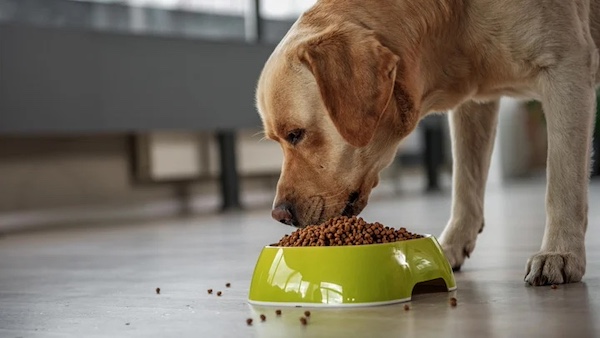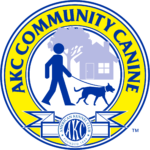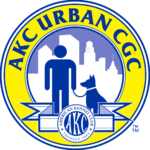A well-behaved dog doesn’t just depend on good training—it also requires the right balance of diet and exercise. Just like humans, dogs need proper nutrition and regular physical activity to maintain both their physical and mental health.
When these essential components are overlooked, it can lead to a variety of behavioral issues, from hyperactivity to anxiety. In this post, we’ll explore how diet and exercise directly impact your dog’s behavior and what you can do to ensure your dog is getting the best possible care.
The Role of Diet in Your Dog’s Behavior
The saying “you are what you eat” applies just as much to dogs as it does to humans. A dog’s diet has a profound impact on their energy levels, mood, and overall behavior. When your dog is fed a balanced, high-quality diet, it supports their physical health and mental well-being, contributing to better behavior.
Nutrition affects your dog’s cognitive function and emotional stability. Just like in people, the food your dog eats influences how their brain functions, which in turn affects how they act. A well-fed dog with proper nutrients is more likely to be calm, focused, and easier to train. On the other hand, a poor diet can lead to irritability, anxiety, or hyperactivity, making behavioral issues harder to manage.
A balanced diet should consist of high-quality proteins, fats, and carbohydrates, with necessary vitamins and minerals. Proteins are especially important, as they provide amino acids that are crucial for brain health and the production of neurotransmitters, which regulate mood and behavior. A lack of these nutrients can lead to sluggishness, irritability, or even aggression in some dogs.
Identifying Foods that May Negatively Impact Behavior
Not all dog foods are created equal, and some ingredients in commercial pet foods can negatively impact your dog’s behavior. For example, foods containing artificial colors, preservatives, and excess sugar can cause hyperactivity or restlessness in dogs. These additives may provide temporary spikes in energy, but they can also contribute to erratic behavior and make your dog harder to manage.
Certain food intolerances or allergies can also manifest as behavioral issues. For example, if your dog is allergic or intolerant to a specific protein or grain, it may cause discomfort that results in behavioral symptoms like irritability, constant scratching, or a lack of focus. Dogs can’t communicate their discomfort the way humans can, so it often shows up as restlessness or aggression.
To ensure your dog is receiving the right nutrients, choose foods made from high-quality ingredients without unnecessary fillers or artificial additives. Look for protein-rich foods, as protein helps maintain muscle mass and energy levels. Additionally, consider switching to a grain-free diet if your dog seems to be experiencing digestive issues or behavioral changes that could be linked to food sensitivities.
When selecting dog food, it’s important to read the ingredient list carefully and avoid products with low-quality fillers, artificial ingredients, or excessive amounts of sugar. Opting for natural, wholesome ingredients can make a significant difference in your dog’s mood and behavior.
The Importance of Regular Exercise

Exercise is essential for your dog’s mental and physical health. Dogs have a natural need to burn off energy, and when they don’t get enough exercise, that pent-up energy can manifest in unwanted behaviors such as excessive barking, chewing, or even aggression. Regular exercise helps your dog expend this energy in a positive way, promoting calmness and relaxation.
In addition to releasing energy, physical activity stimulates the production of endorphins—chemicals in the brain that help reduce stress and promote feelings of happiness. This is why dogs that get regular exercise tend to be calmer and less anxious than dogs that are under-exercised.
Exercise also plays a crucial role in helping dogs stay mentally balanced. Boredom is a common cause of behavior problems in dogs, and regular physical activity provides the mental stimulation they need to stay focused and content. Whether it’s a long walk, a game of fetch, or time spent playing with other dogs, exercise offers the chance for dogs to engage with their environment in meaningful ways.
It’s important to tailor your dog’s exercise routine to their breed, age, and energy levels. High-energy breeds, such as Border Collies or Labrador Retrievers, require more physical activity to stay mentally balanced, while older dogs or smaller breeds may need less vigorous exercise. Regardless of your dog’s breed, regular walks, playtime, and mental stimulation are crucial to maintaining their behavioral health.
Common Behavioral Issues Linked to Lack of Exercise
When dogs don’t get enough exercise, they often develop behavioral problems. This is because their natural energy and drive aren’t being properly channeled. Some common issues that arise from a lack of physical activity include:
- Destructive Chewing: When dogs are bored or restless, they may turn to chewing on furniture, shoes, or other objects as a way to release their energy.
- Excessive Barking: Dogs who don’t get enough exercise may bark excessively due to pent-up energy or frustration. This behavior is often a sign that your dog needs more outlets for their energy.
- Restlessness and Hyperactivity: Dogs who don’t get enough physical activity may become overly excited or restless, making it hard for them to settle down or focus on training.
- Separation Anxiety: Regular exercise can help reduce anxiety in dogs, particularly those that struggle with separation anxiety. Physical activity helps tire your dog out, making them more relaxed and calm when left alone.
Exercise is not only important for preventing these behaviors but also for promoting overall mental health. Dogs that get regular exercise are more likely to feel calm, relaxed, and happy, which results in fewer behavioral problems.
To help prevent these issues, establish a consistent exercise routine that meets your dog’s needs. Regular walks, playtime, and interactive games like fetch or tug-of-war can help ensure your dog remains both physically and mentally balanced.
Combining Diet and Exercise for Optimal Behavior
Diet and exercise go hand in hand when it comes to influencing your dog’s behavior. A balanced diet provides the energy and nutrients your dog needs to stay healthy, while exercise helps expend that energy in a positive way. Together, they create the foundation for a well-behaved and happy dog.
Consistency is key when it comes to combining diet and exercise for optimal behavior. Make sure your dog is eating at regular intervals, getting the proper portion sizes, and consuming high-quality food. Pair this with a structured exercise routine that gives your dog enough time each day to burn off energy and stimulate their mind.
For example, you might start your dog’s day with a balanced meal, followed by a morning walk or play session to expend energy. Incorporating mental exercises, like training sessions or puzzle toys, can also provide additional stimulation to keep your dog focused and engaged throughout the day.
By paying attention to both your dog’s diet and exercise needs, you can prevent many common behavioral problems and ensure that your dog remains mentally and physically healthy.
Conclusion
The connection between your dog’s diet, exercise, and behavior is undeniable. A balanced, nutrient-rich diet and regular physical activity are critical components of your dog’s mental and physical well-being. Together, they help prevent behavioral issues such as hyperactivity, anxiety, and destructive behavior while promoting calmness and focus.
If you notice your dog acting out or displaying signs of behavioral problems, take a close look at their diet and exercise routine. Making adjustments to their nutrition or increasing their physical activity can make a significant difference in their mood and behavior.
To ensure your dog lives a balanced, well-behaved life, make diet and exercise a priority. By doing so, you’ll not only improve their behavior but also strengthen the bond between you and your dog for years to come.





